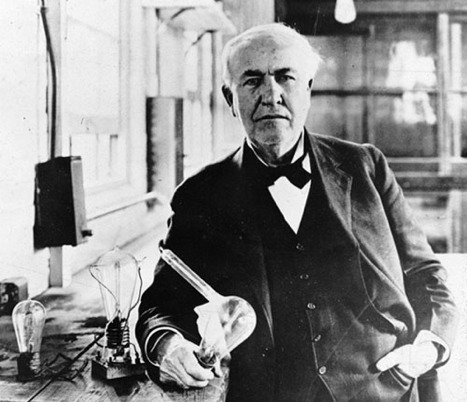
Loser!
Thomas Edison understood the concept of the lightbulb.
What he had a problem with was finding the right filament for the thing.
It took him more than 9,000 tries until he hit on the idea of carbonized bamboo -Â not my immediate first choice. Or second.
But it worked.
The key to success, it turns out, is….. failure.
This may seem counter-intuitive. It certainly is counter-intuitive in the world of television and film – at least as we have known it so far.
Television and film are failure-phobic.
This is why, if you turn on your 1,000 channels of cable, almost all the shows are pretty much clones of one another – or repeats.
Astonishingly, BBC America, once a bastion of great risk-taking (at least in the US cable world), last week ran 8 hours of Top Gear, back to back in prime time and beyond.
The pure terror that must permeate the office of The BBC in Washington…. one can only imagine.
But it is not just the BBCÂ (though they are currently my own personal ‘great disappointment’ of the moment).
Television and film in general have a long history of fear and terror of anything even slightly risky.
This is because, for pretty much all of their histories, the very act of making a film or a TV show was so expensive, there was so much at risk, that the best way to obviate that risk was to, from the beginning, make sure that the program had a proven track record. Hence we get Nanny 911 and Supernanny; every show on Travel Channel is an iteration on the successful Tony Bourdain food format; endless medical shows, all pretty much the same since Ben Casey; The Office UK and The Office USA; Britain’s Got Talent and American Idol and the other endless spin-offs, and so and so on. This list is, alas, endless.
But no worse than The Flintsones- the movie, or (IMHO the worst and most aggregious) Matrix 2 and Matrix 3.
And it is true, that once it was indeed very expensive and complex to make a TV show or a movie and so that fear was warranted, but today the memory of it is corrosive to the creative potential of the medium.
All it takes to take a shot at making a film or a TV show is a video camera, some simple editng software and an idea.
The know-how to make the stuff I can show you here. The idea is your department.
But we have an inherent resistance to risk-taking, borne of years of high costs.
If every single piece of paper cost you $1,000, when you sat down to try and write your first novel – every novel would begin ‘It was a dark and stormy night’, because the pain of throwing away 40 bad pages that didn’t work out would have been too great.
Fortunately, literature doesn’t work that way. (Used to, when Monks hand wrote bibles) but no more.
So let us embrace failure as the key to success. Â Try and fail, try and fail, try and fail is the only way to figure out how to get something new that works.
Nature has been using this method for about a billion years. It is the very foundation of biological evolution.
And now, businesses are starting to get it as well.
An article in this week’s The Economist urgest businesses to embrace failure.
If it’s good enough for Alan Mulally at Ford, it should be good enough for TruTV. No?
1 Comment
steve April 20, 2011
edison said it himself- he didn’t fail 9000 times, he discovered the thousands of ways the thing wouldn’t work.